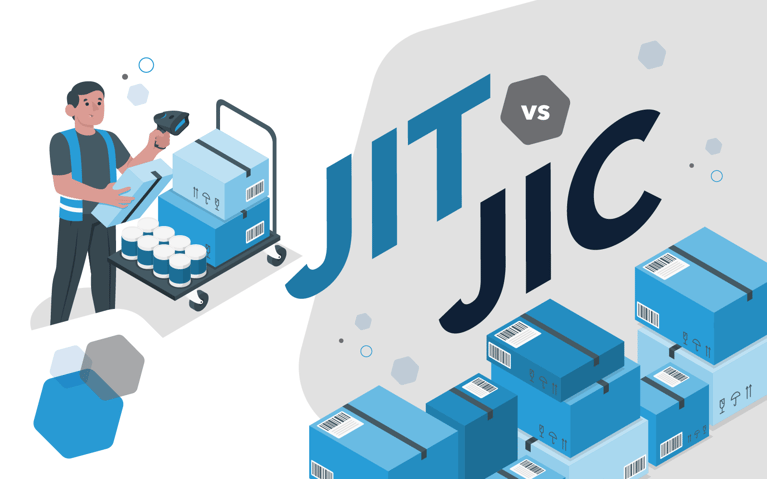Stockouts and delays are two of the most common – and costly – challenges in order fulfillment, especially in today's fast-paced, on-demand marketplace.
When a product is out of stock or an order takes longer than expected, the impact on customer satisfaction is immediate and far-reaching. A single out-of-stock item or delayed shipment can lead to lost sales, frustrated customers and a damaged reputation. What's worse, the cost of repeatedly missing the mark in fulfillment can push loyal customers toward competitors who promise quicker and more reliable delivery.
But avoiding these pitfalls isn't just about stocking up or speeding up; it's about smart capacity planning. Effective capacity planning helps your business stay agile and responsive, aligning resources like inventory levels, labor and warehouse space to meet demand consistently and efficiently.
In the following sections, we'll break down capacity planning and six strategies to help master the order fulfillment process.
Understanding the role of capacity planning in order fulfillment
At its core, capacity planning is about aligning resources with customer demand to fulfill every order smoothly. This process involves managing inventory to avoid shortages, scheduling labor effectively, optimizing warehouse operations and leveraging technology to track and respond to real-time demand changes.
Without a solid capacity planning strategy, many businesses find themselves playing catch-up, with stockouts during busy seasons and surplus inventory during lulls.
Your team can create a more efficient and responsive fulfillment process by analyzing demand trends and planning ahead. This proactive approach keeps customers happy by:
- Meeting expectations
- Reducing unnecessary costs
- Keeping operations lean and flexible
6 Strategies to master order fulfillment capacity planning
Below is an in-depth look at the top strategies for mastering capacity planning in order fulfillment and limiting stockouts or delays.
1. Analyzing historical data to predict demand
Using historical data is one of the most reliable ways to predict demand. Reviewing past sales data allows you to identify patterns, such as seasonal spikes and dips in customer orders.
For example, holiday seasons or special promotions often bring in a higher volume of orders. Analyzing this data lets you anticipate and prepare for these peaks during future campaigns.
In addition to historical sales, external factors like economic conditions may influence purchasing behaviors. Staying aware of market trends or shifts in consumer preferences can also help you adjust forecasts for new products or popular items.
2. Implementing accurate demand forecasting
Accurate demand forecasting is crucial for minimizing stockouts and maintaining optimal inventory levels. Two standard methods organizations use to predict demand include qualitative forecasting, which relies on expert judgment, and quantitative forecasting, which uses mathematical models and data analysis to predict demand.
Businesses will often integrate real-time data into their forecasting process to improve accuracy. For example, monitoring current sales trends and inventory turnover can help your team adjust quickly to demand fluctuations and reduce the likelihood of a stockout or overstocking.
3. Ensuring inventory optimization
Inventory optimization means always having the right amount of stock on hand. There are two key concepts in optimization that organizations should focus on – safety stock and reorder points. Safety stock is a buffer that prevents stockouts during unexpected demand surges, while reorder points are specific inventory levels at which replenishment is triggered.
Using an ABC analysis can often help you prioritize inventory. This method categorizes items based on value and turnover rate, so your high-priority items are always stocked, and less critical items are ordered less frequently. Together, these techniques balance stock levels, reducing stockouts and excess inventory risk.
4. Scaling labor and resource management
Labor is a major component of fulfillment capacity, so it’s important to have a workforce plan that scales with demand. During peak seasons, you may need additional temporary staff, while in slower periods, having a streamlined team can reduce costs. Both situations can drastically impact resources if not adequately planned for.
Automation can also be a powerful resource management tool for companies looking for a streamlined process. Technologies like automated picking and packing systems reduce labor dependency and increase efficiency, particularly during high-volume periods.
Additionally, cross-training employees allows flexibility, enabling workers to move between roles to address demand fluctuations.
5. Leveraging technology for capacity planning
Technology is a game-changer when it comes to modern capacity planning. A warehouse management system (WMS), like Cart.com's Constellation, provides real-time visibility into every corner of your inventory, from stock levels to order statuses and workflow management.
With a WMS, you can monitor stock movements, streamline order picking and improve inventory accuracy, allowing you to detect and address potential bottlenecks before they impact fulfillment times. This kind of transparency means:
- Fewer errors
- Faster processing times
- Quicker response times to sudden changes in demand
Demand planning software is another essential tool, enabling companies to take a more data-driven approach to forecasting and resource allocation. With this software, businesses can combine demand forecasts, resource planning and analytics all in one place, offering a comprehensive view of upcoming needs.
Advanced demand planning tools can even pull in real-time data on consumer behavior, market trends and seasonal patterns, helping you prepare for peak periods and quickly adapt to fluctuations.
Together, these technologies provide a complete picture of your capacity needs, allowing you to make smarter, faster decisions that reduce stockouts, minimize costly delays and ultimately deliver customers a more reliable fulfillment experience.
6. Establishing strong supplier relationships
Effective capacity planning doesn't stop at managing your warehouse; it extends to your entire supply chain, especially your suppliers. Building strong, reliable partnerships with suppliers can make a huge difference in your ability to meet demand consistently and avoid costly delays.
It's important to touch base with your suppliers to discuss lead times, expected demand changes or any upcoming challenges they foresee – particularly during peak seasons when timing is everything.
Having backup suppliers (diversifying) is another smart move to bolster your capacity planning efforts. Even the most dependable supplier can encounter disruptions from unexpected demand spikes or supply shortages. Establishing relationships with alternate suppliers gives you added flexibility. It also ensures that if one source is temporarily unable to fulfill your needs, another can step in, helping you avoid costly gaps in your inventory.
Part with Cart.com to minimize delays and maximize order fulfillment capacity planning
Mastering order fulfillment capacity planning is about more than just avoiding stockouts or managing busy seasons – it’s about building a resilient operation that can respond smoothly to any demand shifts or supply chain challenges.
Cart.com offers comprehensive solutions, including omnichannel fulfillment, advanced warehouse management systems and demand planning software designed to streamline your operations and keep your customers satisfied. Contact our team today to learn how we can help your company master order fulfillment capacity planning.
Subscribe to our emails for the latest industry insights!
By entering your email, you agree to receive marketing emails from Cart.com







